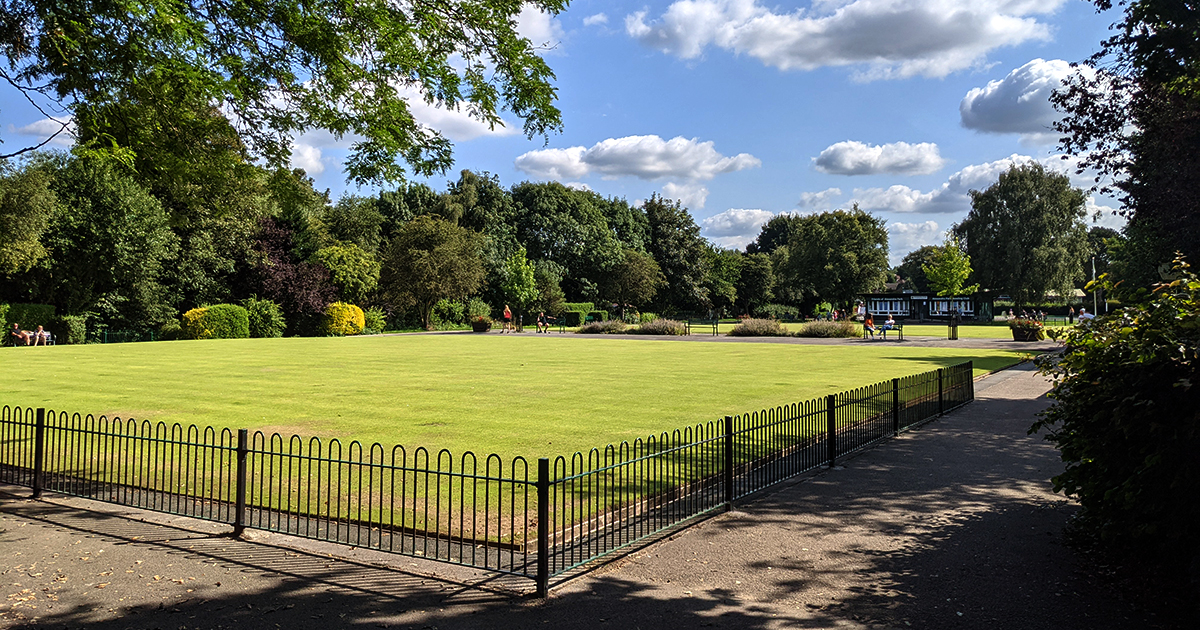The tale of Alexandra Park in Stockton Heath, Warrington is nothing short of captivating. Tucked away in the heart of Stockton Heath, this green oasis serves as both a treasured piece of local history and a beloved recreational hub.
Beginnings and Architectural Brilliance
The narrative of Alexandra Park began when Greenall Whitley & Company Ltd. generously gifted the land to the Stockton Heath Parish Council in 1923. It was an offering that set the foundation for a park that would become integral to Stockton Heath’s identity.
With its uniquely oval activity areas, the park’s design is the brainchild of famed landscape architect, Thomas Mawson. Adjacently, the St. Thomas C of E Primary School, established in 1974, enhances the park’s community appeal. It’s noteworthy that Warrington Borough Council, which oversees the park today, wasn’t instituted until 1974.
A Tribute to King George V
The park’s history is indelibly tied to the memory of King George V. Following his death in 1936, the national memorial committee decided on a philanthropic scheme, birthing the King George’s Fields Foundation. This foundation aimed at commemorating the late king by creating public playing fields across the United Kingdom.
Alexandra Park was destined to become one of these fields. With the support of Cheshire County Council, the land gifted by Greenall Whitley was repurposed as a park in the king’s memory, complete with heraldic panels on its gates indicating its status.
Evolution Over the Years
Alexandra Park witnessed several transformations since its inception. A significant event in its history was during the coronation celebrations of the new Kings and Queens. As captured in the Warrington Guardian on May 15th, 1937, plaques of the King and Queen were unveiled amidst much fanfare. A testament to this event are two oak trees, still proudly standing today, at the park’s Fairfield Road entrance.
World War II, however, presented challenges. The park’s cast iron fencing, for example, was repurposed for the war effort, leading to the hedge-based fencing familiar to visitors today. The post-war era brought more developments. 1959 saw the establishment of a library, fortifying the park’s position as a community nucleus.
A Centre of Activity
Today, Alexandra Park is bustling with activity. With a children’s play area, two bowling greens, and a pavilion home to community groups, there’s always something happening. Especially on Saturdays from Easter until late August, the park comes alive with a café run by the Friends of Alexandra Park (FOAP). This vibrant group is devoted to enhancing and celebrating the park’s amenities.
Several specific areas within the park deserve mention. Mill Lane Field, a dedicated area for ball games, doubles up as the base for the Stockton Heath Festival in July. Then, there are the meticulously maintained bowling greens, free for public use outside club hours. The pavilion, renovated in 2015, is the heart of the park, catering to diverse community activities from art classes to Tai Chi sessions.
Protecting the Park’s Heritage
With its protected status by Fields in Trust, Alexandra Park’s legacy is ensured. Organisations like FOAP actively collaborate to maintain and upgrade facilities. Noteworthy is the installation of a defibrillator in the pavilion, a testament to the community’s commitment to safety.
From its early days as a gift to the community to its status today as a central recreational hub, Alexandra Park stands as a testament to Stockton Heath’s rich past and vibrant present. Each visit offers a journey through time, an opportunity to reflect on its history, and a chance to make new memories.




